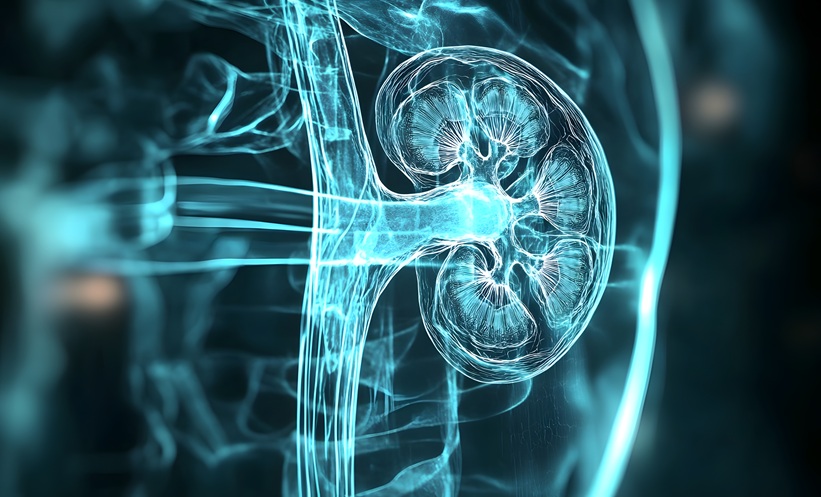RESEARCH INDICATES THAT VALUABLE DIAGNOSTIC PROTOCOLS AND TREATMENTS ARE NOT BEING LEVERAGED WITHIN THE MANAGEMENT OF CHRONIC ACTIVE ANTIBODY-MEDIATED REJECTION
In 2022, over 92,000 kidney transplants were performed globally.1 With advancements in transplant science, 1-year graft survival rates have reached 94.3% for deceased donor kidney transplant recipients, and 97.8% for living recipients. However, 5-year graft survival remains at 76.3% and 86.5%.2
Antibody-mediated rejection (AMR) is one of the most common causes of immune-related allograft rejection.3 Chronic active AMR (CABMR) typically develops 6–12 months post-transplant; 76% of kidney transplant recipients with CABMR experience graft loss 1.9 years after diagnosis.4 Despite these alarming figures, consensus guidelines on the management of post-transplant patients have not been updated with advancements in testing and protocol biopsies, and there is currently no consensus in Europe on CABMR management.5
Given this lack of consensus, what does the clinical landscape look like for patients with CABMR? By conducting an online survey with European nephrologists, transplant nephrologists, and transplant surgeons (N=52) with 3–30 years of experience, the author sought to identify the common practices in the post-transplant monitoring of patients receiving a renal allograft 1 year post-transplant. The survey comprised 58 multiple choice and open-ended questions, which were informed by epidemiological data on AMR, current treatment options, and the personal experiences of the developers. Questions related to respondent demographics, patient caseloads, post-transplant routine screening, and CABMR treatment. Insights from the survey reveal some key barriers to the optimal care of renal transplant recipients.5
VALUABLE DIAGNOSTIC PROTOCOLS ARE NOT BEING USED
Most surveyed physicians restrict post-transplant surveillance to assessing measures of kidney graft function. In the first year following transplant, 88% assess creatinine, and 79% assess proteinuria every 1–3 months. All physicians assess creatinine and proteinuria every 1–6 months.5 However, solely relying on these measures may be suboptimal; research indicates that many CABMR episodes manifest as subclinical changes to the allograft, which do not impact on early-stage creatinine or proteinuria.6
CABMR is characterised by donor-specific antibodies (DSA) in the host binding to human leukocyte antigens within the kidney allograft, leading to complement-mediated tissue damage. According to the literature, de novo DSA assays can help monitor alloimmunity risk.7 Yet, the lack of DSA testing guidance has created confusion regarding its applicability, as was substantiated by the author’s survey: 81% of physicians assess de novo DSA in pre-sensitised patients at least once per year, while 67% do so in patients who are not pre-sensitised.5
As demonstrated in the literature, protocol biopsies remain the only definitive CABMR and subclinical rejection diagnostic method.6 Yet, only 27% of survey respondents perform surveillance biopsies routinely 6–12 months post-transplant.5
More recently, a single-centre study comprising two independent cohorts, revealed donor-derived cell-free DNA in peripheral blood as a biomarker of AMR, although its diagnostic value remains unclear.8 Only 13% of surveyed physicians report using cell-free DNA testing in a small portion of patients.5
CHRONIC ACTIVE ANTIBODY-MEDIATED REJECTION TREATMENT IS LIMITED TO IMMUNOSUPPRESSION
Immunosuppressants are the primary treatment for CABMR, with all surveyed physicians using mycophenolate mofetil and tacrolimus, and 94% using glucocorticoids.5 More than half (52%) of patients do not receive additional treatments, primarily due to disease severity (67%), and lack of evidence regarding other treatments (61%). Although 33% of physicians believe immunosuppression is sufficient, only 57% of patients achieve adequate disease control without additional treatment modalities.5
Besides maintenance immunosuppression, according to the author’s survey, intravenous immunoglobulins (71%), steroid pulse (71%), and apheresis (62%) are the most commonly used treatments.5 As supported by a review, several biologics have been under investigation for the treatment of CABMR, including the monoclonal antibodies rituximab and eculizumab, and the recombinant monoclonal antibody tocilizumab.9 However, only 50% of survey respondents prescribe rituximab, 31% tocilizumab, and 4% eculizumab, respectively;5 this is a hesitancy that could stem from the need for further efficacy and safety support.5 Rituximab, for example, is associated with an elevated risk of pneumonia, bronchiectasis, and pulmonary fibrosis.10
THE WAY FORWARD
For patients with end-stage renal disease, kidney transplantation offers significantly improved quality of life compared with maintenance haemodialysis.11 Unfortunately, advancements enabling the transplantation of highly sensitised patients with or without preformed DSA(s) are being held back by significant variations in CABMR surveillance and management across Europe. Expert consensus is the critical next step to reducing the burden of transplant rejection.





